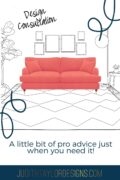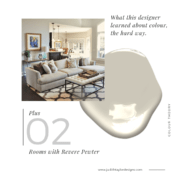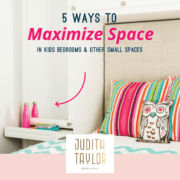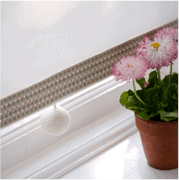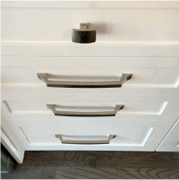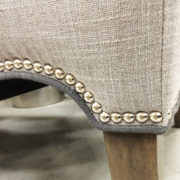DIY projects are great! If you’ve ever completed a home design project, then you know what I’m talking about when I say there’s nothing like the feeling you get after completing a long-awaited transformation. You’ve worked hard and you get to bask in the complements and the glory of a job well done. But it often goes unsaid that there are many serendipitous discoveries and things you look back at and wish you had done differently. Challenges are encountered and wrestled with on the fly.
I can’t count on my fingers the number of times I have been called in late on the timeline after costly mistakes have been made to rescue a project. Let’s face it, DIY projects can also go really wrong. Here’s a great start. You can download any of my free resources, there are many great tips to get you started!
We’ve gathered up our best tips for how to start AND finish a project
How to avoid DIY mistakes common to many homeowners
Plan ahead
Take the adage measure twice, cut once even further and plan everything out on paper before you begin. The best way to avoid costly mistakes in DIY projects is to put time into the most important step, planning. 80% of our project work happens in the planning phase. Clients wonder why they aren’t seeing the magic happen for quite some time. That is because we are collecting ideas and ironing out potential problems before we spend a dime of their hard-earned budget. Source everything, so that you have all the supplies you will need before any construction begins.
Draw out your room layouts and vertical elevations (the walls, and what’s on them), work through the budget, select all your materials up front and collect all the fixtures before beginning to save you big $$$ on costly mistakes. When you do it this way, you get the products you want, avoid hasty selections under time pressure, and avoid delays due to lead times, or supply chain disruptions.
Consult with a pro for advice

With over 12 years of experience in renovating and design, I have seen too many DIY mistakes. I am often called in far too late to be able to help remedy the problem. All of this could be avoided by consulting with a professional at the beginning (it is never too early).
Renovating may look easy enough when watching it done on television but there are many small items that are easy to miss. When you are investing good money, we believe consulting with an expert before undertaking a DIY remodel makes good sense. Think of it like insurance in a good outcome. Many people have a pretty good idea of what they like and don’t like but lack the experience to know how to put it all together and make is look terrific. Just knowing how to read the undertones when coordinating materials will make the difference between a space where the eye travels between points of beauty rather than jarring, stopping at clashing elements that just don’t quite work together.
If you are worried about the cost of working with a pro, consider two things: firstly, consider the cost of NOT working with a pro (expensive mistakes), secondly, it isn’t necessarily an all or nothing proposition. Many pros are willing to work on a consultation basis and can be brought in as often or as little as you need. Just one dodged mistake typically covers the cost of a single consultation. Here’s how to make the most of a one-time consultation. You may need a few before you are done but they will save you money in the long run!
A great renovation will add value to your home.
Work the numbers
We see people off to the races, too excited to begin their project without completely understanding all of the costs. A big splurge in the beginning can result in not enough budget left for the finishing touches that really make a result sing. materials. We develop a budget before we start and collect quotes to make certain it all adds up before beginning.
Leave the professional work to the pros
I always recommend that homeowners get a licensed professional to do plumbing and electrical work. Don’t tackle this on your own. Besides the obvious safety hazards, costly mistakes here can be disproportionate to any potential savings. The cost of a plumber to do it right the first time, vs. a renovation to repair damage from a flood resulting from poorly done plumbing are exponentially better. Worse yet, and electrical fire that your insurance won’t cover when the work wasn’t done by a licensed professional! There is good reason these professionals are licensed and insured in their trades. Don’t cut corners and try to do this yourself.
Don’t be trendy
You heard that right! Avoid the trends and steer towards classic selections. Encaustic tiles, zellige tiles, black and white decor, are all hot trends right now. Investing in your hard finishes on trendy selections will only shorten the life of your investment. It’s great to play along with the current styles but do it in soft furnishings and items that aren’t your big ticket investments. Add an accent here and there to show you know what’s going on but don’t go all in unless you want to renovate again in a few years. It will only degrade your home and your investment.
Put function before beauty
Homeowners tend to get all excited about the new look they desire and forge ahead before exploring opportunities to improve the functionality of a space. Overlook this important step and you will have regrets. When you take the time to draw everything out on paper, you can explore opportunities to tweak a space and utilize it in new ways while also updating the look and feel. You might want to enlarging their kitchen into a formal dining space that only gets used on special occasions. Drafting floor plans and elevations allows the pros to explore different ideas fully before you begin. An added investment, 3-D modeling software can give the homeowner a visual representation to see how the ideas will really look and function.
Integrate your design with the rest of your home
Good design looks intentional. It looks like it belongs. Bad design can look like you entered a different time zone or different era when you move from room to room. As professionals, we strive to create flow from one space to another. A sense of cohesiveness is a sign of professional work. Don’t think everything has to be matchy-matchy, but it should look like it was thought through from one space to another. Repeat elements to achieve this.
Work through the details
Some common areas to consider: Tile Backsplash – homeowners often get stuck on transitions. Where should it begin and where should it end? …and what colour of grout will achieve the desired look? Or where might you add a bit of “pretty” to break up a solid run of kitchen cabinetry? Glass doors are pretty but not when they are featuring canned vegetables and the like.
Plan for the long term
Whether this is your forever home, or you plan to sell down the road, think long-term. Planning for additions like grab bars in the bathroom with some fore-sight for when you may need them yourself or when your mother-in-law visits, will save you another costly renovation. It is so much easier to do when you are renovating that to do it later. We install blocking behind tile in bathrooms even if we are not installing grab bars so when the need arises they can be simply added.
Whether you hire a pro or are starting a DIY project, planning and following these easy steps will save you time and money down the road.









